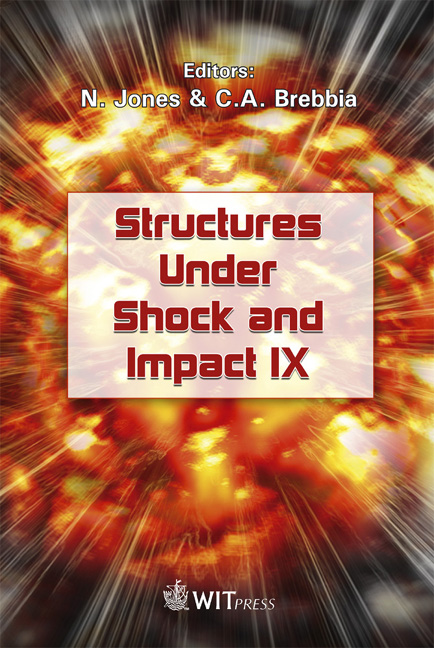Laboratory Simulation Of Blast Loading On Building And Bridge Structures
Price
Free (open access)
Transaction
Volume
87
Pages
12
Published
2006
Size
1636 kb
Paper DOI
10.2495/SU060041
Copyright
WIT Press
Author(s)
M. M. Gram, A. J. Clark, G. A. Hegemier & F. Seible
Abstract
There is a need to modify structural elements of buildings and bridges in order to improve the response to blast loads. Testing the modifications has been a major stumbling block to advances. Failure modes resulting from a 1 to 10 ms blast impulse are substantially different from the failure modes obtained with conventional laboratory structural tests. Field tests using actual explosions are expensive, are not repeatable, and the fireball makes visual and video viewing impossible and reliable real-time data very difficult to obtain. The University of California, San Diego and MTS Systems Corporation were funded to design and build a system able to perform laboratory blast simulations. The system, which was completed in 2005 at UCSD, has been used to test modified and unmodified reinforced structures including: concrete columns 355 mm square by 3 m high; and concrete block walls 200 mm thick by 3 m high. By January 2006, over 20 specimens were tested, with specimen failure modes matching the failure modes from field tests. The system uses impact loading to produce a 2 ms pulse with a typical peak pressure loading of 35 MPa and an impulse of 14 kPa-s over the surface of the column. The system allows observation of the test in person and by high-speed video, as well as successful instrumentation of the specimen. This paper describes the blast simulation system and its capabilities. Keywords: blast simulator, blast hardening, blast mitigation, infrastructure protection.
Keywords
blast simulator, blast hardening, blast mitigation, infrastructureprotection.





